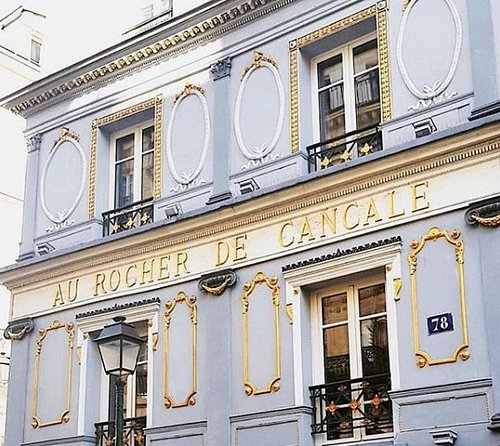French Symbols - The Napoleonic Bee
- Parisian Niche

- Aug 18, 2022
- 4 min read

While we recently learned more about the history of the fleur de lys, and Paris' motto, another thing you will see all over Paris (and beyond) is the Napoleonic Bee. But, what does it really mean, and where did it come from? Let's take a P'Niche peek to learn a bit more...

An icon, Napoléon was considered a military strategist and leader for the ages.
Like any leader who is well aware of their "personal brand," Napoléon knew he was going to need a recognizable and long lasting marketing strategy. At the center of that, would be an emblem that the world over would come to recognize as his own. After some debate (a lion? perhaps a cockerel?), Napoléon decided upon... The humble bee.
Long known as a symbol of immortality and regeneration, the bee was also linked to Charlemagne (who adopted the cicada as his emblem) and King Cilderic, the King of the ancient Merovingian dynasty. Napoléon knew that he wanted to incorporate these greats into his own personal symbols.

Why a bee and not a cicada like Charlemagne? It was a simple error - Napoléon mistook the cicada's outline as that of a bee.
The bee also has the legend of not sleeping, thereby being ever vigilant, diligent, and hard working. Remembering that immortality and resurrection were also linked to bees, Napoléon was all too happy to incorporate all of these virtues into this own emblem.
People may say a lot of things about Napoléon: his height, his wins, and his failures, but one thing is for certain - he truly put a lot of thought into everything he did.

Some of Napoléon's advisors allegedly tried to turn him off of the bee as an emblem (which might be considered feminine and associated with a queen). They asked him to reflect on whether the fleur de lys might be a more suitable and recognizable option as his main emblem.
However, just on the heels of the French Revolution, clever Napoléon recognized that a royal remembrance was not the way to go. Noting the antiquity and endurance of the bee over the fleur de lys, and as he was searching for immortality himself, he set firmly the idea of the Napoléonic bee.

So enamored was he of his new insignia, not to mention the enduring legend of King Childeric, that Napoléon had 300 golden jewels, fashioned in the likeness of cicadas (now bees for our purposes), uncovered, removed from King Childeric's burial site, and then placed / affixed onto his own incredibly bejeweled coronation robes.

What does one do when marketing themselves as Emperor? Well, they turn themselves into an "exclusive lifestyle brand," of course!
These bees popped into all formats of décor and decoration for Napoléon. From fabrics, to porcelain, interior design, and even governmental stationery and flags, this bee was making quite the buzzzzzz...
What is important to note, is that so sacred was the bee to Napoléon, that it was reserved for the exclusive use of the imperial family. No one else, not even a duke, could use the bee as their emblem.

"Now wait just a P'Niche reading minute," you gasp! If bees are so imperially exclusive, then why are there so many golden bees on Guerlain perfume bottles?
It was in 1853 that Pierre-François Pascal Guerlain created the iconic "bee bottle" (although the "Eau de Cologne Imperial" dates back to 1830). As Empress Eugenie wore this scent on her wedding day to Napoléon III, and in part due to the "bee bottle," Guerlain was designated the official royal perfumer. These bee bottles are still wildly coveted and valuable to many the savvy and chic collector.
Falling back in history for a moment, do you know what intoxicating scent Marie Antoinette wore? It wasn't from the Guerlain bee bottle, so check out the Parisian Niche guide to your signature scent to find out! Ok, let fast forward again, back to Napoléon...

While Napoléon was searching for immortality, his reign did come to an end. When Louis XVIII (welcome back, royals! For now...) came to power, he had Napoléon's bees removed and replaced by the royal fleur de lys. Sadly, very few true bees of Napoléon remain to this day because of this eradication.
That said, when Napoléon's remains were returned to France in 1840, it was reported that the majestic pedestal was decorated, and on each side, hung velvet imperials, dotted with bees.
You might notice that the Napoleonic bee is often surrounded by a laurel wreath. More on that later, so do subscribe to Parisian Niche to see what the buzz is about...

When in Paris, P'Niche's favorite places for Napoleonic Bee peeping are:
· Musée du Louvre (Pavillon Richelieu)
rue de Rivoli
Métro: Palais Royal - Musée du
Louvre (Line 1)
· Musée de l'Armée - Invalides
129, rue de Grenelle - 75007
Métro: La Tour-Maubourg (Line 8)
Varenne (Line 13)

Want to incorporate this emblem into your own home and décor? Check out these (non sponsored) ideas...
There are still many more bees to be found on your Parisian treasure hunt. Let's pose a playful question, P'Nichers... - where do you peep for Napoleonic Bee symbols on Paris? Where have you find your favorite ones? Sound off in the comments below et à bientôt!

#Paris #iLoveParis #parisjetaime #travel #history #architecture #lifestyle #jetsetter #Parisian #Chic #motto #Napoleon #Bees #napoleonicbees #buzz #symbol #symbols #HistoireDeParis




The Napoleon Bee has been a favorite of mine since the 80's. I've always wanted a vintage Guerlain Bottle. Maybe I'll find one some day. This was a splendid article. Thank you.